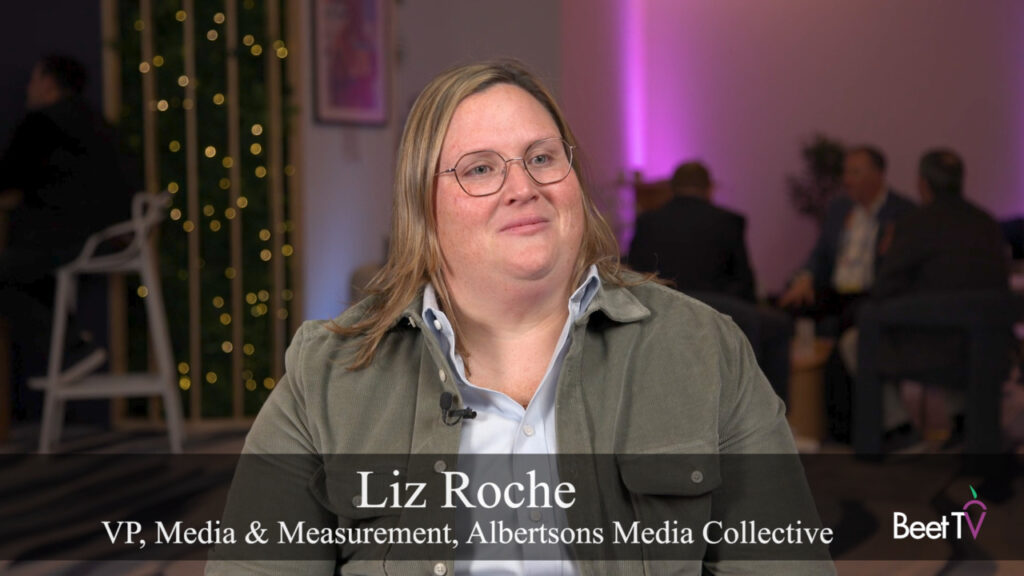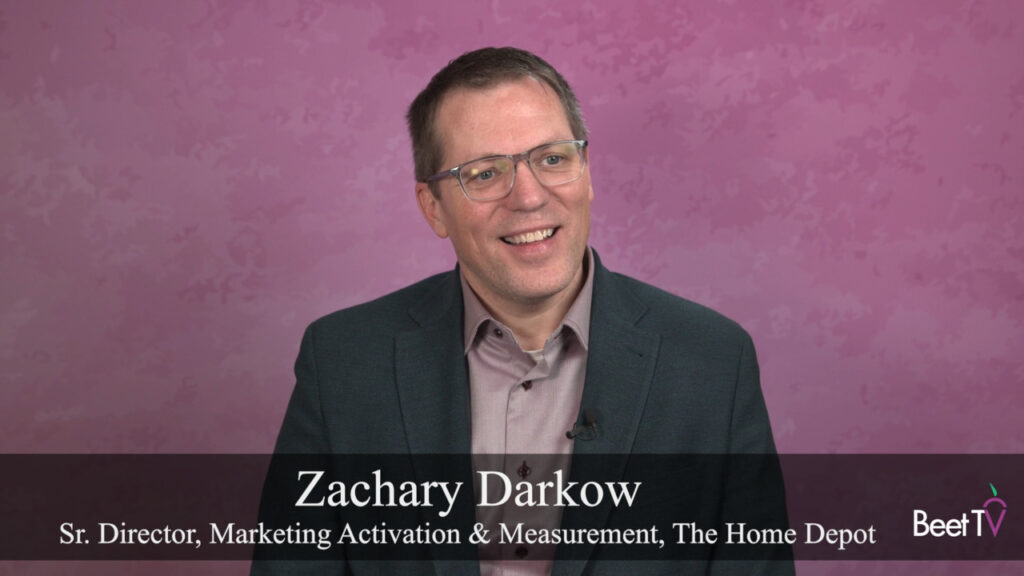SAN FRANCISCO – New technology solutions are going to help replace household-level addressable television advertising with more granular targeting. But will agency holding company siloes stand in the way of creating, executing and optimizing the best advanced-TV campaigns?
Former Starcom MediaVest Group advanced television specialist Tracey Scheppach has a foot in both of those spheres as CEO & Co-Founder of her agency, Matter More Media. Scheppach helps new advanced-TV technology providers while doing direct brand activation based on CRM and other data.
In this interview with Beet.TV at RampUp 2018 conference, Scheppach refers to research presented by Forrester analyst Jim Nail showing that 15% of brand-side executives have executed addressable TV campaigns. “If you look at the law of adoption, we’re at the tipping point,” Scheppach says, echoing Nail’s conclusion.
However, the addressable TV work that’s been done so far has been derived from household address files. “Being at a digital conference with LiveRamp, the question is how can you bring digital data to household level addressable television. Which is hard because so far it’s built off a street address file versus an IP or cookie file or a device ID,” she says.
Scheppach points to emerging IP-based technology, noting that companies like Sinclair and Sorenson are pursuing dynamic ad insertion to smart TV sets. Then there is the ATSC 3.0 broadcast standard for over-the-air broadcast TV.
With ATSC 3.0, transmission will be “IP-based, completely mobile, always on, census-level data, full addressability, which is going to open up more and more inventory to be addressable,” Scheppach says.
Since starting Matter More Media and being on the “front lines” with clients, Scheppach has a closer view of the impact of agency holding companies having separated their creative assets from their media operations. This can be a stumbling block to perfecting, executing and tracking the four elements of successful addressable TV campaigns: the idea, its production values, media channel selection and analytics, according to Scheppach.
“All four pieces work together, all four pieces should be at the table together, not in separate siloes not ever to meet. You just can’t throw the creative over the wall to the media people and just have them execute,” she says.
In its sell-side consulting work, the agency helps people “trying to bring product to market, like a Sinclair, like programmers. They have to figure out how to structure the technology and pitch it to clients.”
In the agency’s direct activation for clients, Scheppach is pursuing “anyone that has a CRM file. I think catalogers are just a natural fit.”
She thinks addressable can help marketers for whom the expense of traditional TV has been a barrier. Some brands with catalogs or direct-mail campaigns are trying to figure out “how do I make it more accountable? How do I make it more storytelling? How do I build my brand out of it? And sight sound and motion is going to do that better than paper.”
This video is part of a series produced in San Francisco at the RampUp 2018 conference. The series is sponsored by Alphonso. For more videos from the series, please visit this page.













































